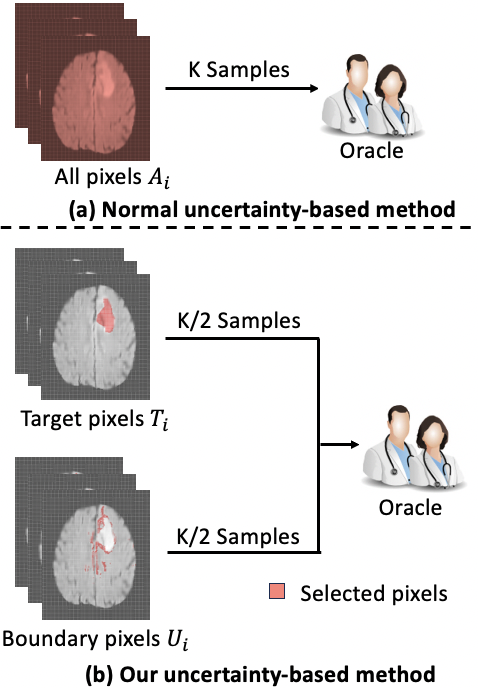Active learning (AL) has found wide applications in medical image segmentation, aiming to alleviate the annotation workload and enhance performance. Conventional uncertainty-based AL methods, such as entropy and Bayesian, often rely on an aggregate of all pixel-level metrics. However, in imbalanced settings, these methods tend to neglect the significance of target regions, eg., lesions, and tumors. Moreover, uncertainty-based selection introduces redundancy. These factors lead to unsatisfactory performance, and in many cases, even underperform random sampling. To solve this problem, we introduce a novel approach called the Selective Uncertainty-based AL, avoiding the conventional practice of summing up the metrics of all pixels. Through a filtering process, our strategy prioritizes pixels within target areas and those near decision boundaries. This resolves the aforementioned disregard for target areas and redundancy. Our method showed substantial improvements across five different uncertainty-based methods and two distinct datasets, utilizing fewer labeled data to reach the supervised baseline and consistently achieving the highest overall performance. Our code is available at https://github.com/HelenMa9998/Selective\_Uncertainty\_AL.
翻译:暂无翻译







